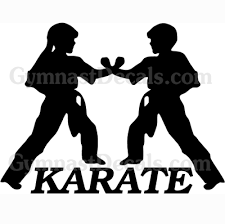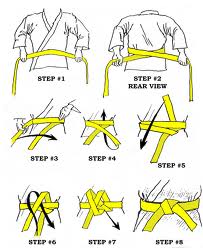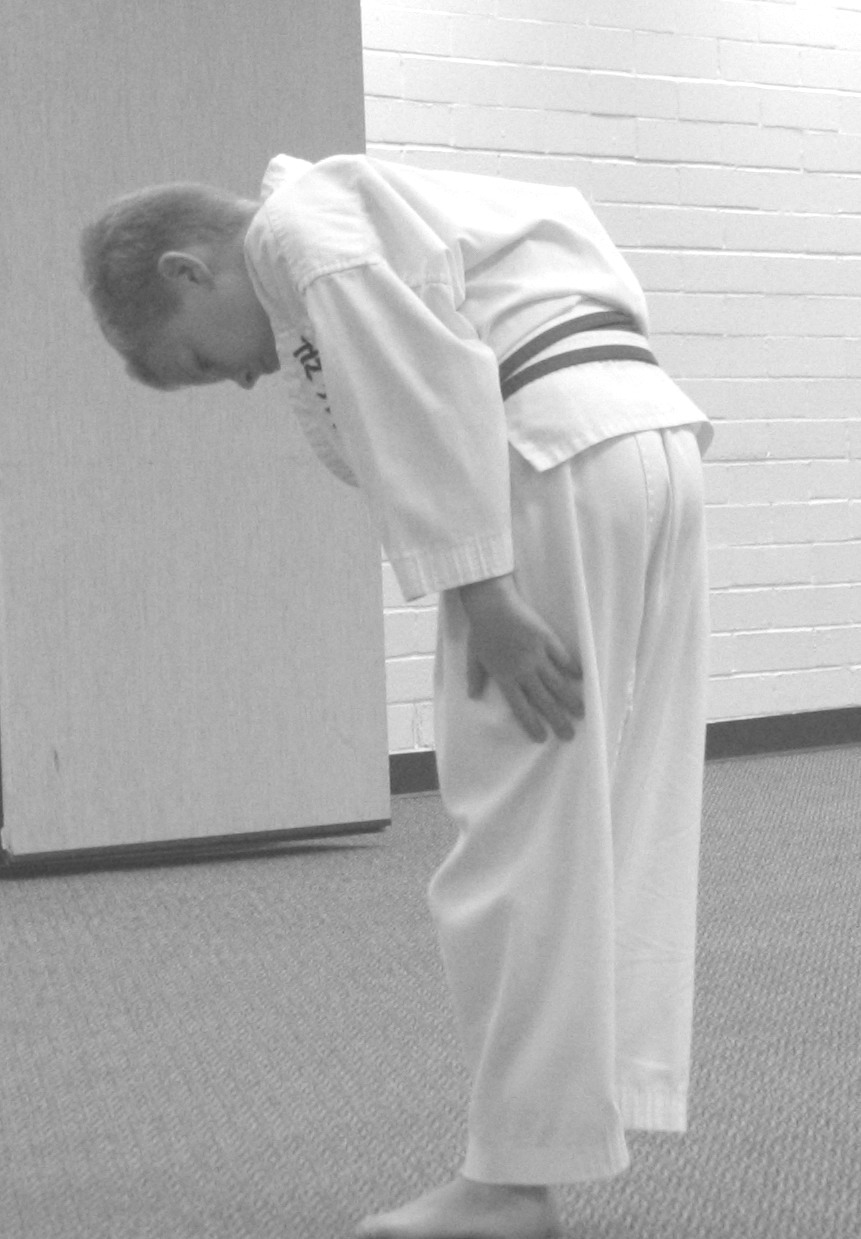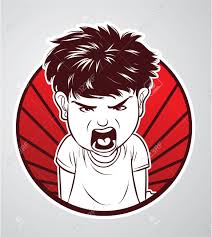YOUTH KARATE
______________________
Why Take Karate?
(Ages 7-13)
The
kids will tell you...it's fun! But maybe more important, for changes that can and have occurred in Shidokan Shorinryu karate students: Shy kids became more outgoing; the unruly grew to be more self-disciplined; unfocused kids developed better concentration; the anxious became calmer; the submissive felt more assertive; and aggressive kids improved in patience and self-control. The reasons? Confidence and a deeper respect for themselves and others, plus a positive attitude that says, "Yes, I
can!"
The
method for teaching and
motivating each student is subtly unique, taking into consideration
his/her age, size, strength, skill level and personality, as well as
any limitations. Hopefully this will inspire these same
considerations for
others.
Sharon Basinger Sensei, Certified Instructor and 7th degree black belt teaches youth karate as
self-defense, and as a martial art rather than a competitive sport. It is not about showing off, but stopping an attacker or bully. Offense is a last resort. The goal of karate training is not having to use it, not to learn violence, but how to avoid and prevent it. Kids are shown how to not only enhance their newly-discovered powers, but also control them. Students
are encouraged, not intimidated... and safety is always paramount!
Learning from and helping each other, and using skills effectively and
with good judgment is the true art of karate.
Reviews... read comments from students & parents

Skills Taught
Blocks, kicks, strikes, safe falls and throws (flips/take downs)
-- with power, efficiency and control. Kata:
Specific
solo moves combine techniques of defense and offense in sequence, so
instant and correct reaction is natural if required to defend
yourself. Complexity increases with rank.
Hold Breaks:
Easy-to-learn practical techniques to break free from an assailant, to use momentum,
leverage and vital striking points to prevail in seemingly
indefensible situations, regardless of size or strength.
Partner Drills:
Practice
of defense and offense skills with increasing difficulty while cooperating
with each other so both partners benefit and improve.
Board Breaks:
Rather
than entirely a specific goal in itself, it also becomes a peripheral benefit -- a
symptom of the strength and focus obtained as a result of karate
training.
Kick/Punch Focus Pads:
Kicks and various strikes to perfect accuracy and balance.
Kumite:
Prearranged
(and "free") sparring enhances timing, reflexes, balance and coordination, as well as safe falls and
throws…with strong emphasis on self-control. Difficulty increases with skill level. Intermediate to advanced
ranks.
Bunkai:
Effective
application of kata with three or four attackers, including safe falls
and throws. Increases spatial awareness, agility and control.
Advanced ranks.
Makiwara (striking board):
To condition and
strengthen while precisely focusing the power of
your entire body to a single point. Advanced and older ranks.
How to Tie Belt ("Obi")

(1) Place the middle of the belt in front of the body. (2) Wrap belt around the back, overlap, and (3) bring back to the front. (4) Make an X with the ends. (5) The top end goes under both "belts" from (6) bottom to the top. (7) Tie knot.
IMPORTANT: Gi pants must not touch the floor. If so, they need to be hemmed for safety — our first concern! Floor length can result in a fall. Rolled-up (they never stay) distracts the student and is very dangerous. Correct length is just below or above the ankle.
When to Bow
The
bow in karate is often misunderstood.
It holds no spiritual or religious connotation, nor is it a sign of a
master-slave relationship between instructor and student.
Instead, the bow is a cultural practice done to show humility,
appreciation and a willingness to learn. It is also a display
of mutual respect between teachers and students, and
fellow students. It most closely correlates with the Western
tradition's handshake. The bow is from a kneeling (Seiza) or standing position.
the bow is a cultural practice done to show humility,
appreciation and a willingness to learn. It is also a display
of mutual respect between teachers and students, and
fellow students. It most closely correlates with the Western
tradition's handshake. The bow is from a kneeling (Seiza) or standing position.
Students
bow when entering the dojo (training area), clearing their minds
of distractions, committing to fully focus on and attempt to absorb the
material about to be taught. Bowing toward instructor is to
show respect and gratitude for the time and energy devoted to sharing
his/her experience, skills and knowledge. Bowing is to be done
between students before and after kumite, bunkai and partner drills.
The ending bows express thanks for furthering each other's
skills, and the learning about themselves and their partners.
Bowing upon exiting the dojo signifies that training has
finished -- for the moment or for the day -- until time to return.
- Always bow ("rei") when bowed to, and...
- Upon entering & exiting training area;
- Before joining or leaving class;
- When summoned by Sensei or sempai;
- Upon meeting & leaving Sensei or sempai;
- Before & after kata;
- Before & after class.
Dojo Manners & Rules
Karatedo will help students ("karate-ka") achieve: Humility, integrity, and respect for themselves and others,
as well as a spirit of cooperation with fellow karate-ka, assistant instructors and other
higher-ranked students ("sempai"), and the teacher ("Sensei").
- Address as Sensei: Sharon Basinger, Chief Instructor, and Seikichi Iha, Grand
Master…always. Any out-of-town, visiting black belt instructing at Karate STL. Any higher-ranked black belt
while instructing at other dojos. Also…in Basinger Sensei’s absence
from dojo, any black belt instructing at Karate STL. Ask Basinger Sensei if in doubt.
- Address as Sempai
or Mr./Ms: Assisting karate-ka, higher-ranked but below black belt –
Sempai, or Mr./Ms. then last name, or first name if they prefer – e.g.
“Sempai Chris” or “Mr./Ms. Chris” … unless told otherwise.
- Observers/Parents: ALL ages are kindly requested to remain upstairs or on
sideline very
quietly and unobtrusively -- no cell phone talking, or
communicating with students while they are in class
please. .
- When late, it's impolite to simply walk into class. Instead, quietly warm up by yourself, apart from class. Then do not join the class yet, but stand and wait, just inside the dojo, until instructor signals you to enter.
- During
class, do not leave training area early, or leave for a break,
to talk to observers, etc., without clearing it with instructor.
- Wait to be notified by Basinger Sensei, as to if or when you will test for promotion, rather than inquiring.
- Respect all instructors and follow their directions without question,
comment, hesitation or facial expression while in dojo. For
clarification, ask Basinger Sensei privately, apart from others,
outside class.
- When interacting with other karate-ka, especially those
lower in rank, ALWAYS consider their age, skill level, size, strength and
any limitations. Then adjust your speed and power accordingly. Help
each other!
 (To top)
(To top)
Student Creed
(Ages 7+)

Losing Your Temper
There
was a boy with a very bad temper. His father gave him a bag of nails
and told him that every time he lost his temper, to hammer a nail in
the back fence. The first day, the boy had driven 37 nails into
the fence! Then it gradually dwindled down. Finally the day
came when the boy didn't lose his temper at all. His father then
suggested that the boy now pull out one nail for each day that he was
able to hold his temper. The days passed and finally all the
nails were gone.
to hammer a nail in
the back fence. The first day, the boy had driven 37 nails into
the fence! Then it gradually dwindled down. Finally the day
came when the boy didn't lose his temper at all. His father then
suggested that the boy now pull out one nail for each day that he was
able to hold his temper. The days passed and finally all the
nails were gone.
The father said, "You have done well; I
am very proud of you. But look at the holes in the fence.
The fence will never be the same. When you say and do things
in anger, they leave a scar just like these. You can put a knife
in someone and draw it out, but it won't matter how many times you say,
'I am sorry,' the wound is still there. And never forget, a verbal
wound can be as hurtful as a physical one."
 (To top)
(To top)





 the bow is a cultural practice done to show humility,
appreciation and a willingness to learn. It is also a display
of mutual respect between teachers and students, and
fellow students. It most closely correlates with the Western
tradition's handshake. The bow is from a kneeling (Seiza) or standing position.
the bow is a cultural practice done to show humility,
appreciation and a willingness to learn. It is also a display
of mutual respect between teachers and students, and
fellow students. It most closely correlates with the Western
tradition's handshake. The bow is from a kneeling (Seiza) or standing position. (To top)
(To top) 
 to hammer a nail in
the back fence. The first day, the boy had driven 37 nails into
the fence! Then it gradually dwindled down. Finally the day
came when the boy didn't lose his temper at all. His father then
suggested that the boy now pull out one nail for each day that he was
able to hold his temper. The days passed and finally all the
nails were gone.
to hammer a nail in
the back fence. The first day, the boy had driven 37 nails into
the fence! Then it gradually dwindled down. Finally the day
came when the boy didn't lose his temper at all. His father then
suggested that the boy now pull out one nail for each day that he was
able to hold his temper. The days passed and finally all the
nails were gone. (To top)
(To top)